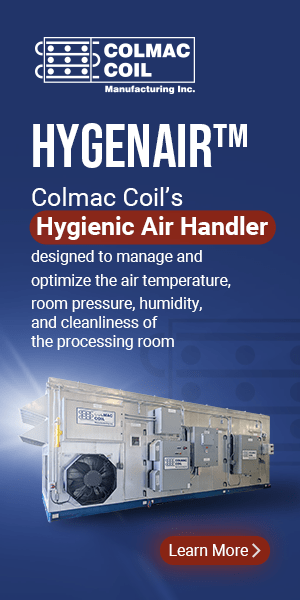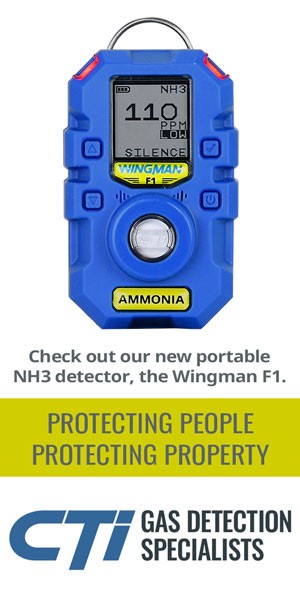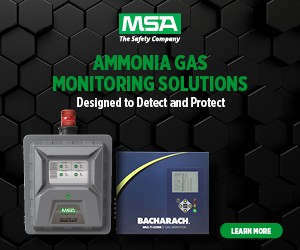OSHA Ramps Up COVID Enforcement By Lowell Randel, IIAR Government Relations Director

The Department of Labor’s Office of Inspector General (OIG) recently issued a report on OSHA’s COVID enforcement in 2020 that supports Biden’s contentions about OSHA enforcement in 2020. The report found that onsite inspection and travel restrictions led to a dramatic decrease in inspections. Comparing inspections over an eight month period in 2019 and 2020, OIG found that OSHA conducted more than 26,000 compared with approximately 13,000 inspections in 2020. The OIG report also noted that OSHA received 15 percent more complaints in 2020 but performed 50 percent fewer inspections. The OIG concluded that these factors led to “an increased risk that OSHA has not been providing the level of protection that workers need at various job sites.” Among the OIG’s recommendations was for OSHA to issue an Emergency Temporary Standard (ETS) to establish enforceable requirements.
UPDATED OSHA COVID-19 GUIDANCE
Shortly after taking office, the Biden Administration initiated a series of actions to increase its COVID-19 policies and enforcement. One of the first steps taken was to update OSHA’s COVID-19 guidance to employers. While not an enforceable standard on its own, the guidance sets the agency’s expectations for how employers address COVID-19 hazards. The updated guidance emphasizes the importance of the implementation of COVID-19 Prevention Programs. Key elements of prevention programs include:
- Assignment of a workplace coordinator
- Identification of where and how workers might be exposed to COVID-19 at work
- Identification of a combination of measures that will limit the spread of COVID-19 in the workplace, in line with the principles of the hierarchy of controls
- Consideration of protections for workers at higher risk for severe illness through supportive policies and practices
- Establishment of a system for communicating effectively with workers and in a language they understand
- Educate and train workers on your COVID-19 policies and procedures using accessible formats and in a language they understand.
- Instruct workers who are infected or potentially infected to stay home and isolate or quarantine • Minimize the negative impact of quarantine and isolation on workers
- Isolating workers who show symptoms at work
- Performing enhanced cleaning and disinfection after people with suspected or confirmed COVID-19 cases have been in the facility
COVID NATIONAL EMPHASIS PROGRAM
In addition to updating COVID-19 guidance, OSHA has also implemented a National Emphasis Program (NEP) to focus enforcement activities related to the pandemic. The goal of this NEP is to significantly reduce or eliminate worker exposures to COVID-19 by targeting industries and worksites where employees may have a high frequency of close contact exposures and therefore, controlling the health hazards associated with such exposures. This goal will be accomplished by a combination of inspection targeting, outreach to employers, and compliance assistance. The NEP augments OSHA’s unprogrammed COVID-19 inspections by adding a component targeting specific highhazard industries or activities where the disease hazard is prevalent. The NEP targets establishments that have workers with increased potential exposure to this hazard and includes provisions to ensure that workers are protected from retaliation related to COVID-19 issues.
The NEP will be implemented by OSHA Area Offices and equivalent programs will be administered by state plan states. OSHA is expected to continue prioritizing COVID-19 fatalities, complaints, and referrals through unprogrammed inspections. However, the NEP adds programmed inspections to the agency’s pandemic-related activities. The NEP includes lists of targeted industries that OSHA has identified as being higher risk for workplace transmission of COVID-19. The identified targeted industries include several categories in which IIAR members may fall such as meat and poultry processing, supermarkets and grocery stores, and warehousing and storage.
Programmed inspections can be conducted either on-site or a combination of on-site and remote methods. IIAR members with multiple facilities should be aware that OSHA will provide a letter to the corporate entities regarding the COVID-19 inspection. It is important that any identified deficiencies during an inspection also be addressed in other facilities within the company. Failure to abate known hazards in another facility could result in a repeat or willful citation.
EMERGENCY TEMPORARY STANDARD
As of the writing of this article, the Biden Administration was nearing the issuance of an Emergency Temporary Standard (ETS) specific to COVID-19 in the workplace. Biden directed OSHA to make a determination on whether to issue an ETS by March 15, 2021. However, the process was delayed as newly confirmed Labor Secretary Marty Walsh requested an additional review of the data and science related to the pandemic before moving forward. The ETS was finally transmitted to the White House Office of Information and Regulatory Affairs (OIRA) on April 26, 2020. OIRA review generally takes around two weeks. It is expected that the ETS will become effective immediately after issuance and will be in place for 6 months. OSHA may also move forward with a rulemaking to establish a permanent infectious disease standard.
It is likely that the ETS will face legal challenges as critics of issuing a standard will cite the increasing number of vaccinated people and decreasing COVID-19 caseloads. But, even without an ETS, the COVID-19 NEP gives clear indications that OSHA will be accelerating its pandemic-related inspections. Regardless of the status of the ETS, IIAR members are strongly encouraged to review the current OSHA and CDC guidance and their own protocols and be prepared for increased OSHA enforcement activity.












